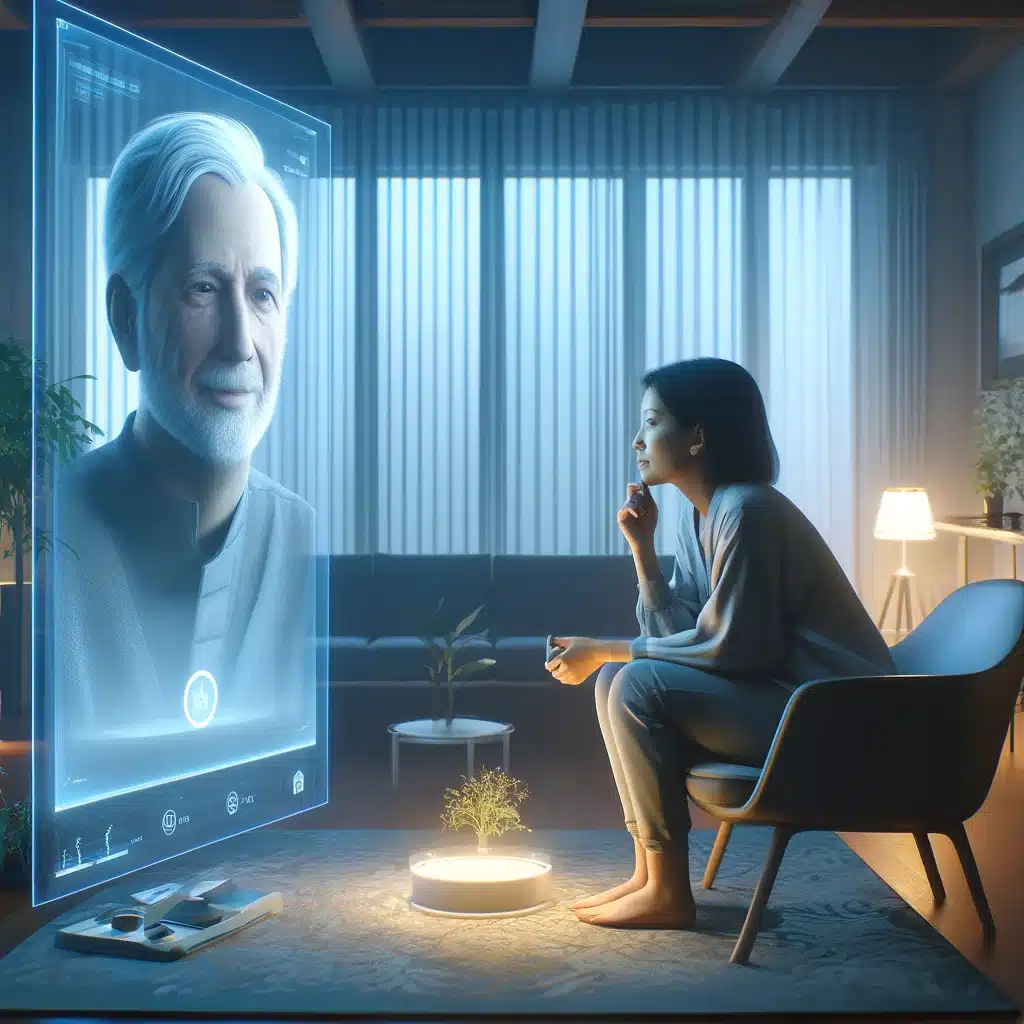Can Artificial Intelligence Keep Our Deceased Loved Ones Alive in Digital Form? – Digital Resurrection: How AI Breathes Life into Memories of the Deceased
Could you ever imagine speaking to your loved ones after they’ve passed away? With today’s artificial intelligence (AI), this scenario is closer to reality than you might think. Technologies like Generative Pre-trained Transformers (GPTs) and DALL·E image generation are turning what once seemed like science fiction into a tangible possibility. Imagine preserving the essence of a loved one through a digital persona that can converse, reminisce, and even share stories. This blog post explores the innovative field of digital resurrection through AI, where photographs and voice recordings are used to create lifelike digital replicas of the deceased.
While the technology offers comfort, it also raises profound ethical questions about privacy and the nature of grief. We will explore the revolutionary world of digital resurrection through AI, focusing on how photographs, voice signatures, and social media accounts of deceased individuals can be used to create lifelike digital replicas. We’ll discuss the technology behind GPTs and AI image generators like DALL·E, the emotional impact and ethical considerations of interacting with digital avatars of the deceased, and the potential for these technologies to change how we remember and mourn.
Join us as we delve into the complexities and capabilities of AI in transforming how we remember and interact with the memories of those we’ve lost. Discover the intriguing yet chilling possibilities that AI brings to preserving the essence of those we’ve cherished.
The Technology Behind Digital Resurrection GPTs and AI in Creating Digital Personas
Generative Pre-trained Transformers (GPTs) and other AI technologies have opened new doors to what’s possible in the realm of digital creation. By analyzing extensive datasets, including photographs, voice recordings, and social media activity, AI can construct digital personas that reflect the personality, speech patterns, and even the preferences of the deceased.
The Role of DALL·E and Image Generation
DALL·E, an advanced image generation model, complements this by creating visual representations that are eerily lifelike. Together, these technologies form the backbone of digital resurrection, providing us with tools to create avatars that not only look but also sound and interact like their human counterparts.
The Emotional Impact A Comforting Presence or a Chilling Reminder?
For many, the prospect of interacting with a digital representation of a loved one offers a unique form of solace. These digital entities can provide a sense of presence, helping to bridge the gap between memories and reality. However, for others, this concept may seem unsettling, raising questions about the nature of grief and memory.
Ethical Considerations Privacy, Consent, and Authenticity
The creation of a digital persona for the deceased brings to the forefront significant ethical dilemmas. Issues of privacy, consent from the person’s estate or family, and the authenticity of the digital representation are critical considerations that must be navigated carefully.
The Future of Mourning Changing How We Remember the Departed
As we move further into the digital age, the way we mourn and remember the departed is evolving. Digital resurrection offers a new dimension to memorialization, providing a dynamic way to interact with the memories of those we’ve lost. Yet, it also prompts us to consider where we draw the line between preserving memory and disturbing the peace of the departed.
Conclusion: Navigating the New Frontier
The advent of AI and GPTs in creating digital personas of the deceased is indeed groundbreaking. It offers us a way to keep our loved ones’ memories alive in a form that’s more interactive and tangible than ever before. Yet, as we venture into this new frontier, it’s crucial to approach with sensitivity, respect, and mindful consideration of the ethical implications. As we embrace these technological advances, we must also ponder the ultimate question: How do we honor the memory of the deceased while respecting the finality of death?
The exploration of digital resurrection through AI is not just about the technical possibilities but also about understanding the human heart’s capacity to remember, love, and grieve. In this journey, technology and emotion intertwine, leading us to confront the deepest questions about life, death, and what lies beyond.

